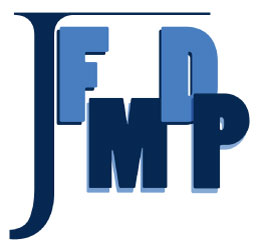Journal of Family Medicine and Disease Prevention
Laennec and the Stethoscope
Gargantilla P1*, Martín BM2 and Pintor E1
1European University of Madrid, Spain
2Fundation Hospital of Alcorcon, Madrid, Spain
*Corresponding author: Prof. Pedro Gargantilla, European University of Madrid Madrid, Spain, E-mail: pgargantilla@yahoo.es
J Fam Med Dis Prev, JFMDP-2-023, (Volume 2, Issue 1), Short Commentary; ISSN: 2469-5793
Received: December 15, 2015 | Accepted: January 13, 2016 | Published: January 16, 2016
Citation: Gargantilla P, Martín BM, Pintor E (2016) Laennec and the Stethoscope. J Fam Med Dis Prev 2:023. 10.23937/2469-5793/1510023
Copyright: © 2016 Gargantilla P, et al. This is an open-access article distributed under the terms of the Creative Commons Attribution License, which permits unrestricted use, distribution, and reproduction in any medium, provided the original author and source are credited.
On the occasion of the bicentenary of the birth of the stethoscope we pay homage to this brilliant invention. The stethoscope may be the one instrument common to all doctors and also several health professionals, no other symbol so strongly identifies a doctor than a stethoscope dangling around the neck. Until 1816 physicians used direct auscultation (placing the ear on the chest wall), it was known to Hippocrates but little practiced. It was hard to perform this act on obese or endowed females. One day in 1816 René Théophile Hyacinthe Laennec (1781-1826), a French physician, noticed boys at play in a court of the Lauvre who, with the ear applied at the extremities of long pieces of wood, listened to the transmission of the sound of a pin scratch at the opposite end [1]. Few days later Laennec rolled up a paper notebook, applied one end to the chest, and listened to the heart (indirect auscultation). He felt that he could hear and listened to the heart. Until that year symptomatology was the only means to diagnosis. He named his instrument the stethoscope, from the Greek "to explore the chest" [2]. His invention introduced objectivity to clinical medicine and made it possible to reveal physical changes before the patient died and helped identify illnesses that were asymptomatic [3].
In 1818 Laennec spoke before the society of the School on "Auscultation". Laennec needed wide vocabulary to create a classification system for his findings: include animal voices and pitch, music and urban life [1].
In 1819 he published the first edition of his book entitled De l'Auscultation Médiate (On Mediate Auscultation), one of the great medical classics. It was the first seminal work on the use of listening to body sounds. Two years later it was translated into English under title A Treatise on Disease of the Chest [2]. These books described in exquisite detail many lung diseases, especially tuberculosis.
Although there are many evolutions and new instruments in medicine the stethoscope, for its practicity and easiness, is still the most used medical device in the world and it will probably have many years ahead. What will happen in the future? Advances in ultrasound technology have led to the development "ultrasonic stethoscopes" (miniaturized ultrasound instrument), they allow us to see the heart and its pathology during the physical examination. They allow us to confirm a cardiac abnormality and make a specific diagnosis [4]. Ultrasonic stethoscope provides additional information and could become part of the clinical examination in selected patient. With appropriate use ultrasonic stethoscope can decrease medical errors and replace more advanced imaging in some situations [4].
Finally, nosocomial infection have been linked to devices such as electronic thermometers, blood pressure cuffs, latex gloves, masks, neckties and stethoscopes. They have been reported to be potential vectors if they are not disinfected and there are increasing reports of the risk of transmitting antibiotic microorganisms on stethoscopes therefore they should be disinfected after every use [5].
References
-
Jay V (2000) The legacy of Laennec. Arch Pathol Lab Med 124: 1420-1421.
-
Duffin J (1998) To see with a better eye: A life of RTH Laennec. Princeton NJ: Princeton University Press
-
Daniel TM (2004) René Théophile Hyacinthe Laennec and the founding of pulmonary medicine. Int J Tuberc Lung Dis 8: 517-518.
-
Moore CL, Copel JA (2011) Point-of-care ultrasonography. N Engl J Med 364: 749-757.
-
Longtin Y, Schneider A, Tschopp C, Renzi G, Gayet-Ageron A, et al. (2014) Contamination of stethoscopes and physicians' hands after a physical examination. Mayo Clin Proc 89: 291-299.





